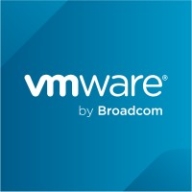

GNU Make and VMware Tanzu Platform are key players in the software lifecycle space, focusing on build automation and containerized application management, respectively. VMware Tanzu stands out with its extensive deployment and enterprise management features, though it is priced higher than GNU Make.
Features: GNU Make offers straightforward syntax, support for nested makefiles, and optimized code compilation. VMware Tanzu provides seamless Kubernetes integration, multi-cloud support for cloud applications, and comprehensive orchestration capabilities.
Room for Improvement: GNU Make could benefit from graphical interface development, better support for complex dependency management, and enhanced scalability for cloud environments. VMware Tanzu could improve on cost-effectiveness, streamline integration processes for non-VMware environments, and enhance user interface usability.
Ease of Deployment and Customer Service: VMware Tanzu offers sophisticated deployment models and robust support, ideal for large enterprises transitioning to cloud infrastructures. GNU Make's simplicity results in fewer support needs but lacks formalized service options for troubleshooting and assistance.
Pricing and ROI: GNU Make is open-source and free, delivering high ROI for budget-conscious teams focused on build automation. VMware Tanzu requires a higher investment upfront but offers significant ROI through enhanced efficiencies and scalability in cloud deployment, justified by its robust feature set for enterprises.
| Product | Market Share (%) |
|---|---|
| VMware Tanzu Platform | 1.5% |
| GNU Make | 1.0% |
| Other | 97.5% |

| Company Size | Count |
|---|---|
| Small Business | 10 |
| Midsize Enterprise | 3 |
| Large Enterprise | 10 |
VMware Tanzu Platform is designed for cloud-native development and management of Kubernetes, CI/CD processes, microservices, and containerized workloads. It supports deployments both on cloud and on-premises, providing centralized management via Mission Control.
VMware Tanzu Platform offers seamless integration with vSphere, ESX, and vSAN, supporting centralized cluster management and lifecycle management. The platform provides a GUI for monitoring CI/CD pipelines and network policies, enhancing multi-tenancy and Day 2 operations. Users can easily manage Kubernetes clusters, monitor applications, and integrate with tools such as GitHub, GitLab, Cloud Foundry, and Azure. It ensures compliance and security for service providers, financial institutions, and businesses.
What are the key features of VMware Tanzu Platform?
What benefits and ROI should users look for in VMware Tanzu Platform reviews?
Industries such as financial institutions, service providers, and businesses requiring rigorous compliance and security deploy VMware Tanzu Platform. These entities benefit from centralized management, streamlined DevOps processes, and integrated tools, enhancing their capabilities in cloud-native developments and containerized workloads.
We monitor all Build Automation reviews to prevent fraudulent reviews and keep review quality high. We do not post reviews by company employees or direct competitors. We validate each review for authenticity via cross-reference with LinkedIn, and personal follow-up with the reviewer when necessary.